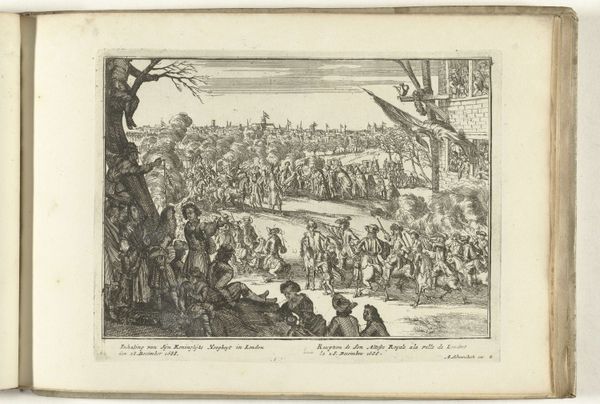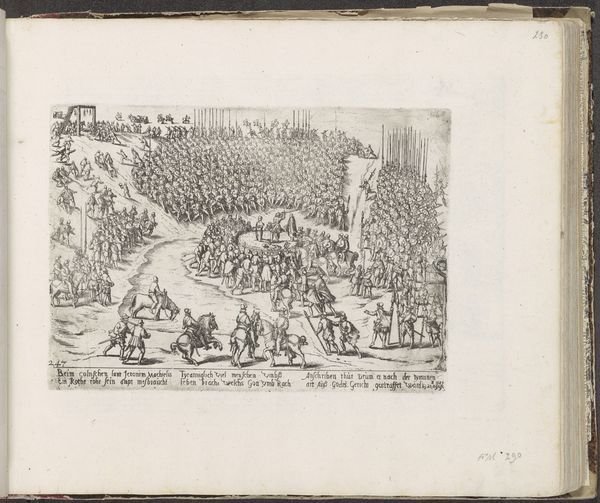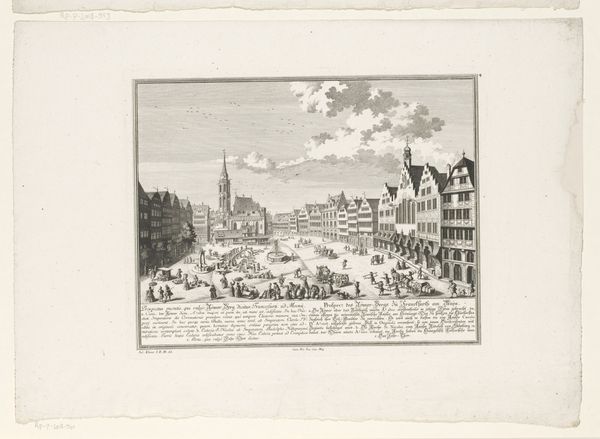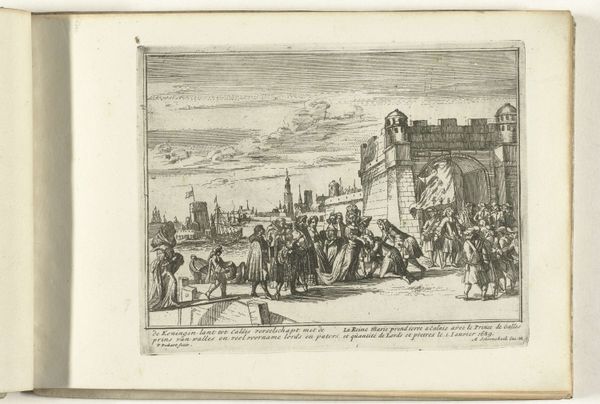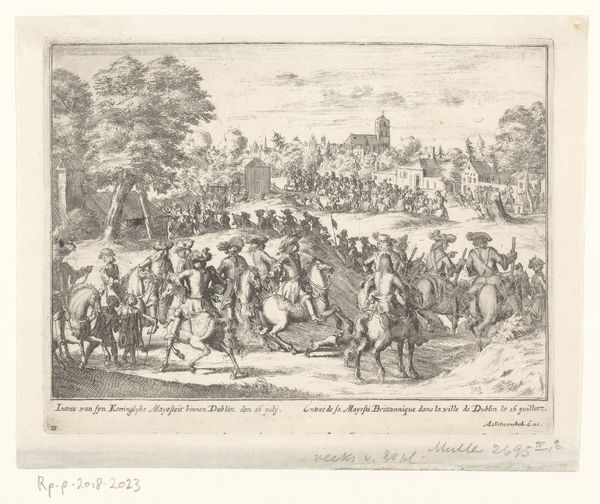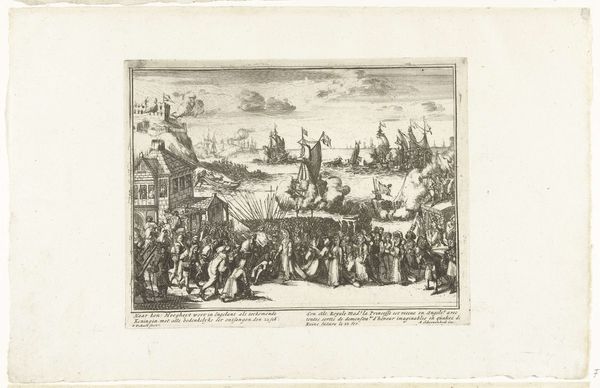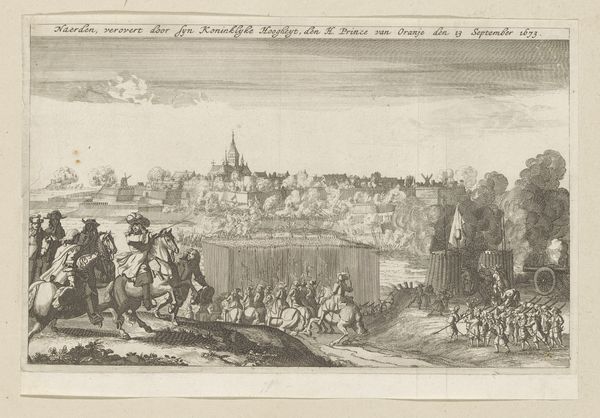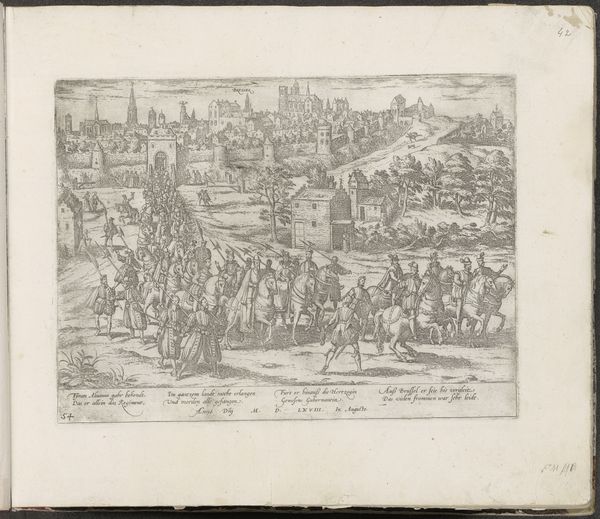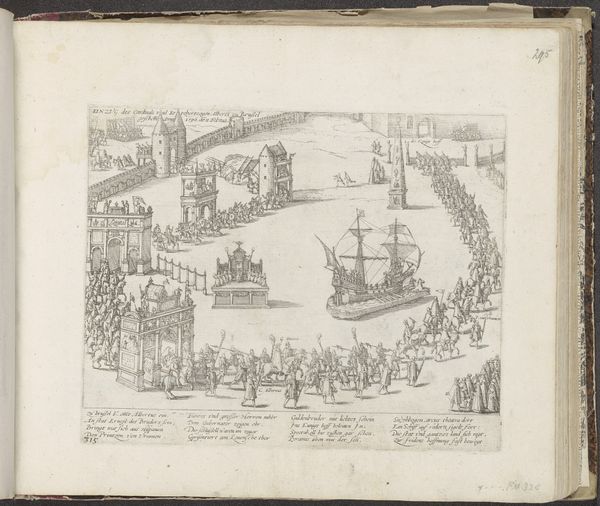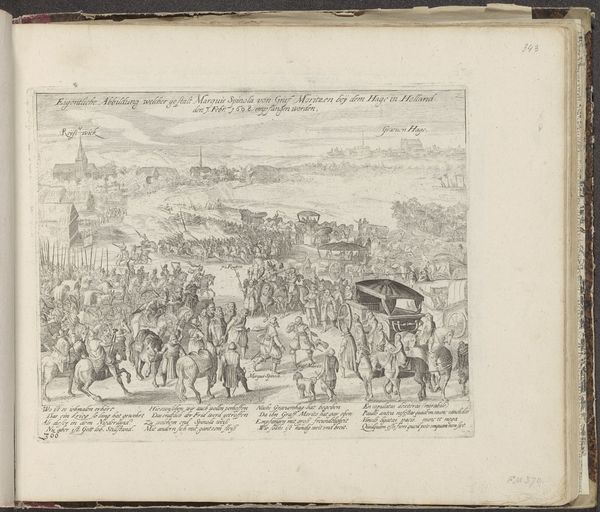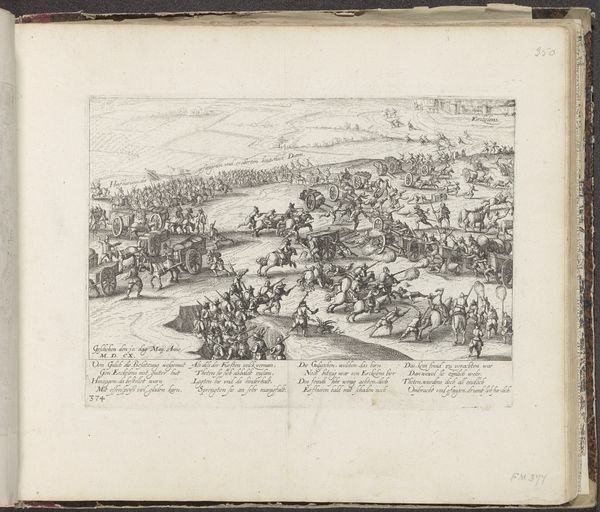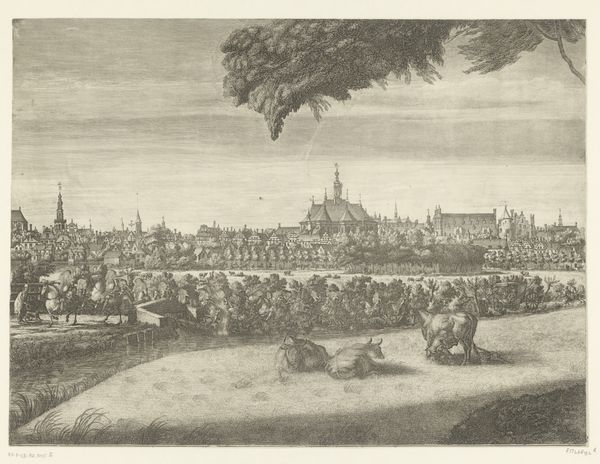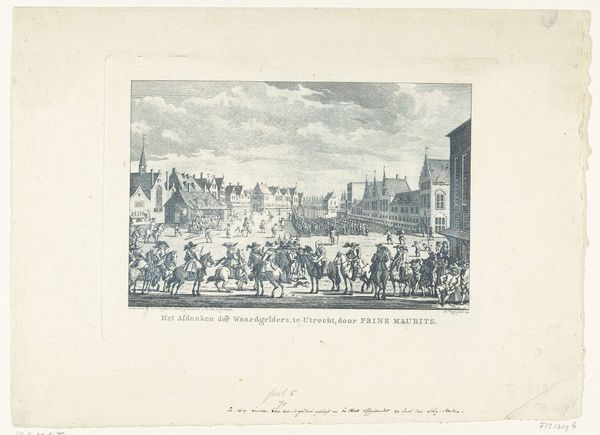
print, engraving
#
baroque
# print
#
old engraving style
#
landscape
#
line
#
cityscape
#
history-painting
#
engraving
Dimensions: height 258 mm, width 300 mm
Copyright: Rijks Museum: Open Domain
Curator: What strikes me immediately about this engraving is the sheer busyness of the scene, all these figures meticulously rendered despite the small scale. It almost vibrates with energy. Editor: Indeed. We're looking at "The Entry of Prince William III into London, 1688," created in 1691. It's a print that captures a pivotal moment in British history, produced shortly after the event itself. Curator: History-painting. It’s tempting to frame William's arrival purely as a liberatory intervention—ousting James II and ushering in a new era, but can we disentangle that triumphant narrative from its exclusionary effects, particularly the ongoing colonial project connected with Dutch and English imperialism? Editor: Absolutely. These prints served as potent visual propaganda. The Glorious Revolution and William’s role were actively shaped and disseminated through images like this, influencing public opinion. Curator: The artist emphasizes pageantry and order. Lines of soldiers and masses of spectators form neat edges with architectural landmarks; perhaps to suggest the inevitability of this changing power dynamic. The composition itself normalizes power. Editor: The print’s linear style, very typical of baroque engravings, communicates that perceived sense of order very directly, doesn't it? Note how the landscape becomes a stage for political theater, serving almost as a backdrop to emphasize the procession. Curator: Which begs the question: for whom was this spectacle intended? How did people of different classes and identities understand or participate in these displays of power? Surely women's presence looks… staged. Editor: These were, of course, very deliberately constructed events. Images like this engraving reinforced that deliberate construction but also played an essential part in wider civic memory. Curator: Thank you, it helps me understand the purpose of this depiction. It makes me wonder, however, what it might have suppressed or sidelined? Editor: Indeed, analyzing who controls imagery and shapes its message becomes vital if we hope to form a comprehensive understanding.
Comments
No comments
Be the first to comment and join the conversation on the ultimate creative platform.
